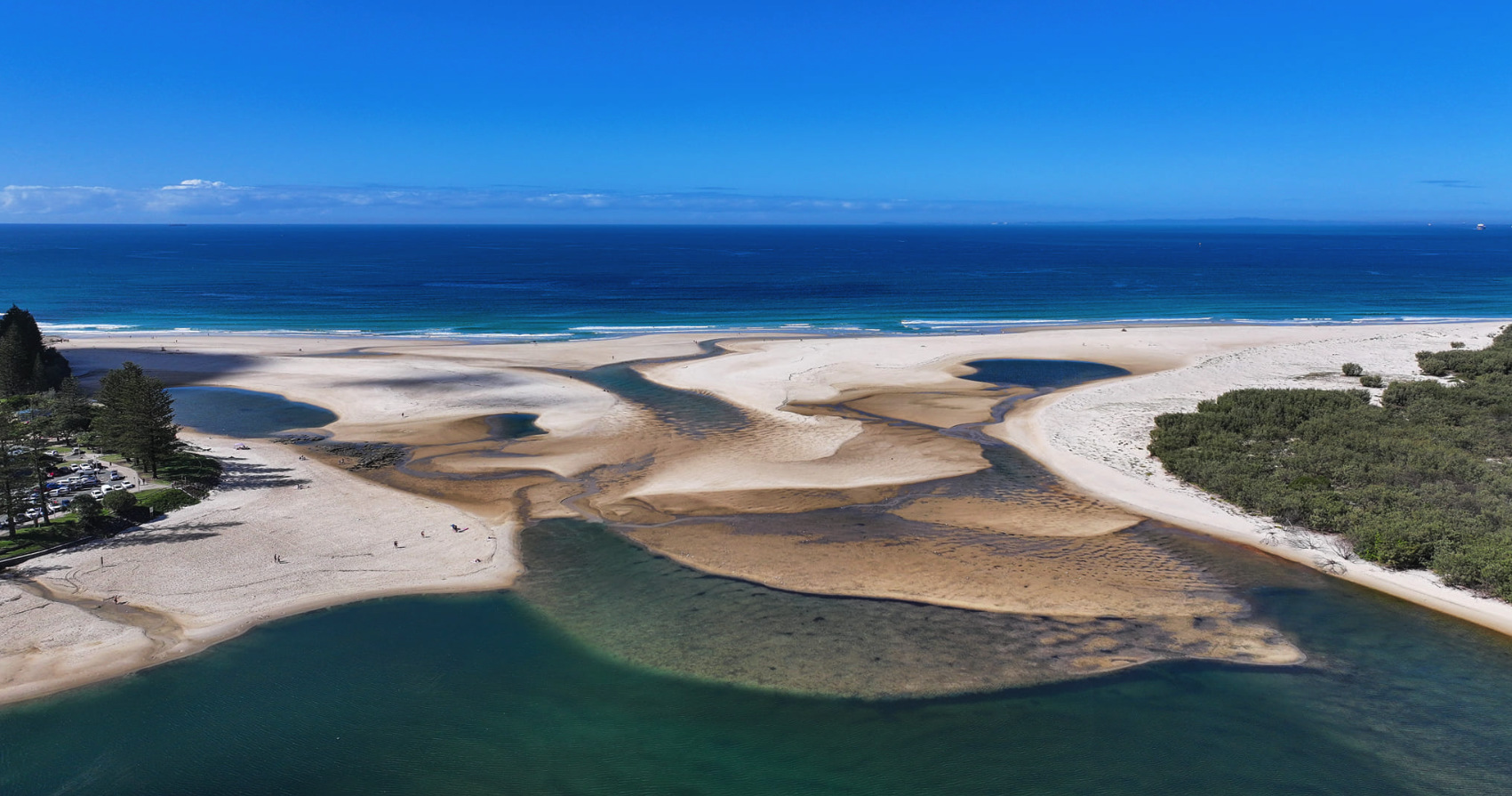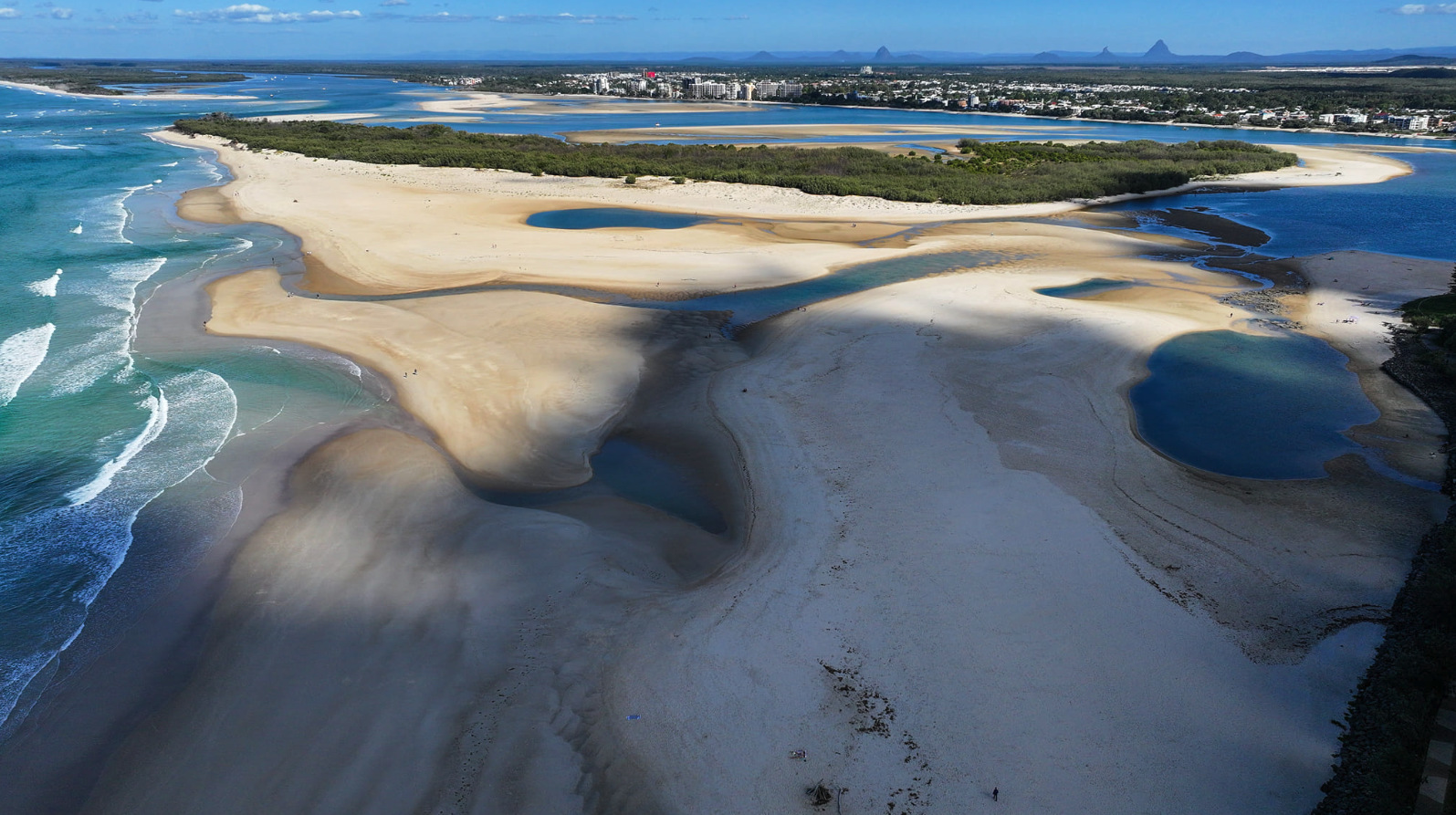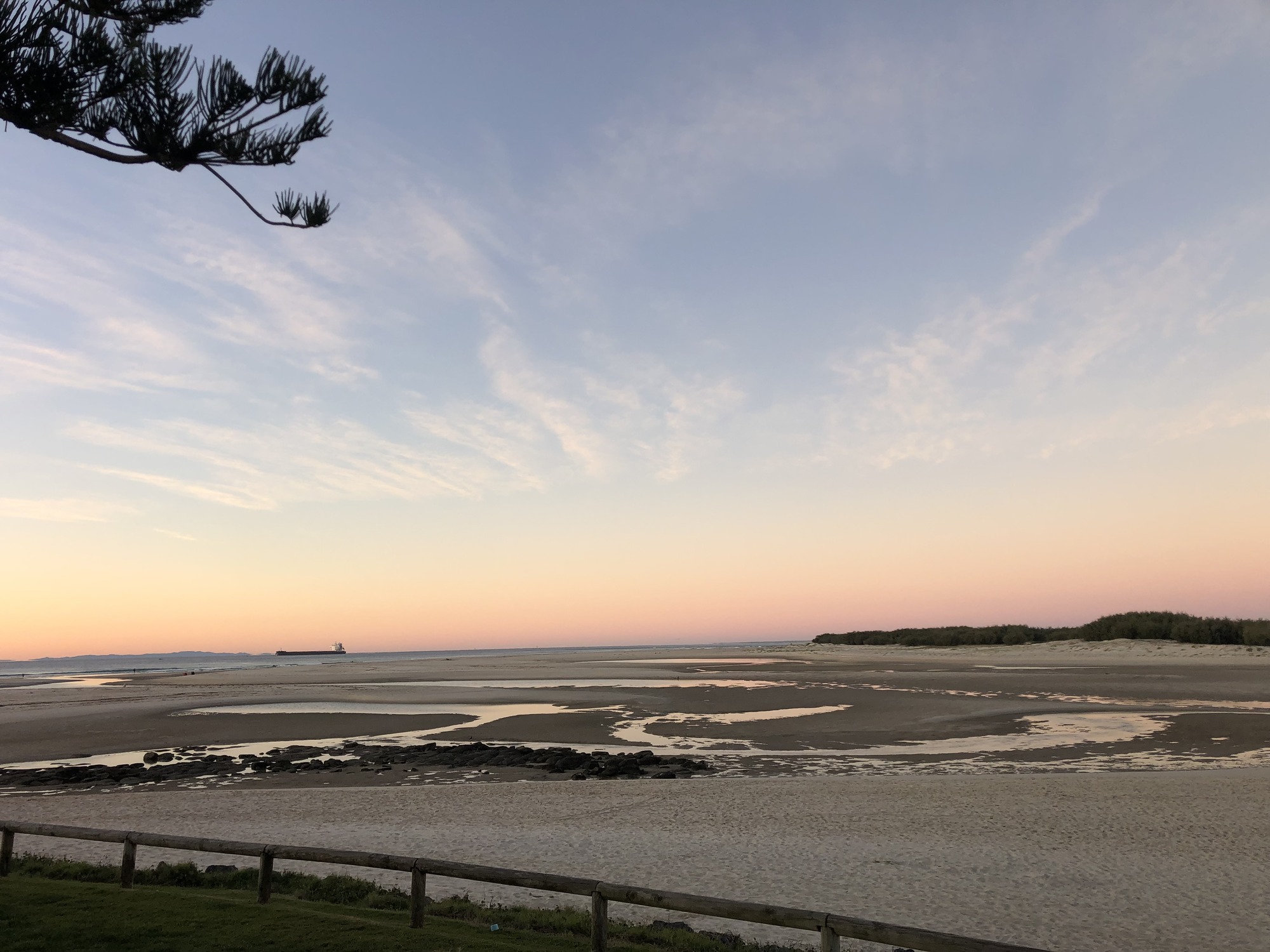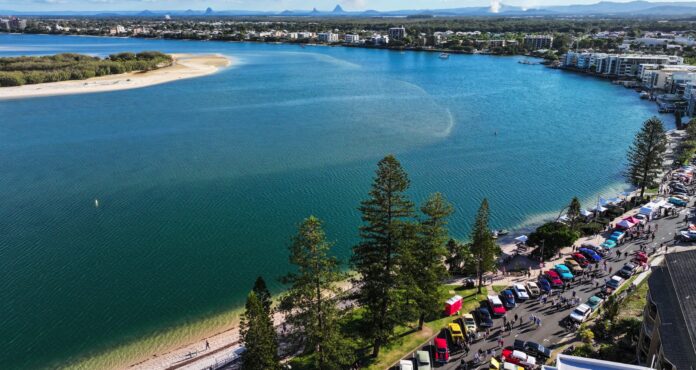There are increasing concerns the water quality could significantly deteriorate off the coast of a Sunshine Coast suburb and tourist hub.
Representatives from community groups fear the northern reaches of the Pumicestone Passage at Caloundra may become a lake, after a tidal breakthrough at nearby Bribie Island early last year.
But government officials say there has been “no substantial change” in water quality and they will continue to monitor the situation.
The breakthrough led to sand clogging parts of the waterway, including the Caloundra Bar, restricting tidal flow and water movement in an area of about 0.7sqkm during the past 18 months.
Take Action for Pumicestone Passage president Ken Mewburn said it could create more problems.
“We believe a potential exists for a worsening of the water quality in the north end because of reduced tidal flushing, and inflow from stormwater drains,” he said.
“This issue would be exacerbated during times of low tides and heavy rain.”
Stormwater from Caloundra and Golden Beach flows into the northern end of the passage.
“Prior to the breakthrough, it (the passage) was flushed twice daily (with the tide flow),” he said.
“(But) with the limited flow, nutrients entering from stormwater will be held in suspension and gradually settle. This can result in changes to oxygen levels in the water and may result in changes to the marine life.
“The future is a guessing game; however, logic would indicate that the changes will impact water quality, while the old bar area is in a state of closure.”

A spokesperson for the Department of Environment and Science said there was reduced tidal out-flow at the Caloundra Bar and it continued to monitor the area.
“Environmental changes at the northern end of the Pumicestone Passage are part of a natural process that will continue to change over time,” they said.
“It is difficult to predict if the entrance will close completely.”
The spokesperson said DES regularly tested the water.
“The department assesses water quality eight times annually at 13 sites along the Pumicestone Passage, with the most recent program conducted in May,” they said.
“This monitoring shows no substantial change in water quality at the northern-most monitoring site in the Pumicestone Passage since January 2022, when the Bribie Island breakthrough occurred.”
A South-East Queensland waterways report card produced by Healthy Land and Water gave the passage an overall condition rating of ‘good’ for 2022, declining from ‘excellent’, due to the impact of severe weather events in the catchment.
Mr Mewburn said his group had just created its own subcommittee to examine water quality from the drains, particularly near Bulcock Beach.
“TAPP have limited resources for water monitoring and have approached the University of the Sunshine Coast for assistance, and have met with the council to discuss additional precautionary monitoring,” he said.

UniSC senior lecturer Javier Leon told Sunshine Coast News in May that the Caloundra Bar could close completely, the local ecosystem could already be affected, there could be more telling impacts on the passage and more data and modelling needed to be done.
Caloundra Coast Guard commander Roger Pearce, who has lobbied for dredging to be done in the northern reaches, mainly to open the way for boaties, said the water was “quite brown now” after some rain this week.
“Normally, that brown colour would clear up quickly but it will be interesting to see if it clears up during the next week or two, because there is hardly any movement of water anymore,” he said.
“There is just a little bit of movement at high tide, over the old Caloundra Bar, but nothing like there used to be.”
He said Bulcock Beach, a renowned tourist destination, could suffer.
“That used to be a beautiful, pristine beach but people could be hesitant to swim there,” he said.
The secretary at Ithaca-Caloundra City Life Saving Club at Bulcock Beach, Patricia Barry, said the beach and its surrounds had “changed an awful lot” since the breakthrough.
“There is a huge build-up of sand at the end of the passage,” she said.
“It’s very easy to walk from the mainland across to Bribie Island now: no trouble at all at low tide.
“And the water flow in and out of the passage is not what it used to be.”
But the restricted movement has brought some benefits, at least in the short term.
“The beach is actually now a lot safer than it used to be,” she said.
“We haven’t got that raging current that we used to have coming through.
“And the beach area has lost a lot of its very steep drop-off. It’s a lot shallower to walk into the water, so it’s a lot more ideal now for kids.
“In many ways, it’s now an ideal family beach and safer for older people who don’t want to get knocked off their feet by surf.”

But she admitted that water quality “could be an issue” in the future.
“Because the flow of water has slowed down considerably, it means we’re not getting that wash-through we did in the past. If the bar at the northern end gets more clogged then I would think we could be in trouble with water quality,” she said.
“It wouldn’t be quite as clear and the drains running down into the water carry a lot of unpleasant stuff.
“Some of the sand banks you can see here used to be white, pristine sand, and they’re not as white now.”





